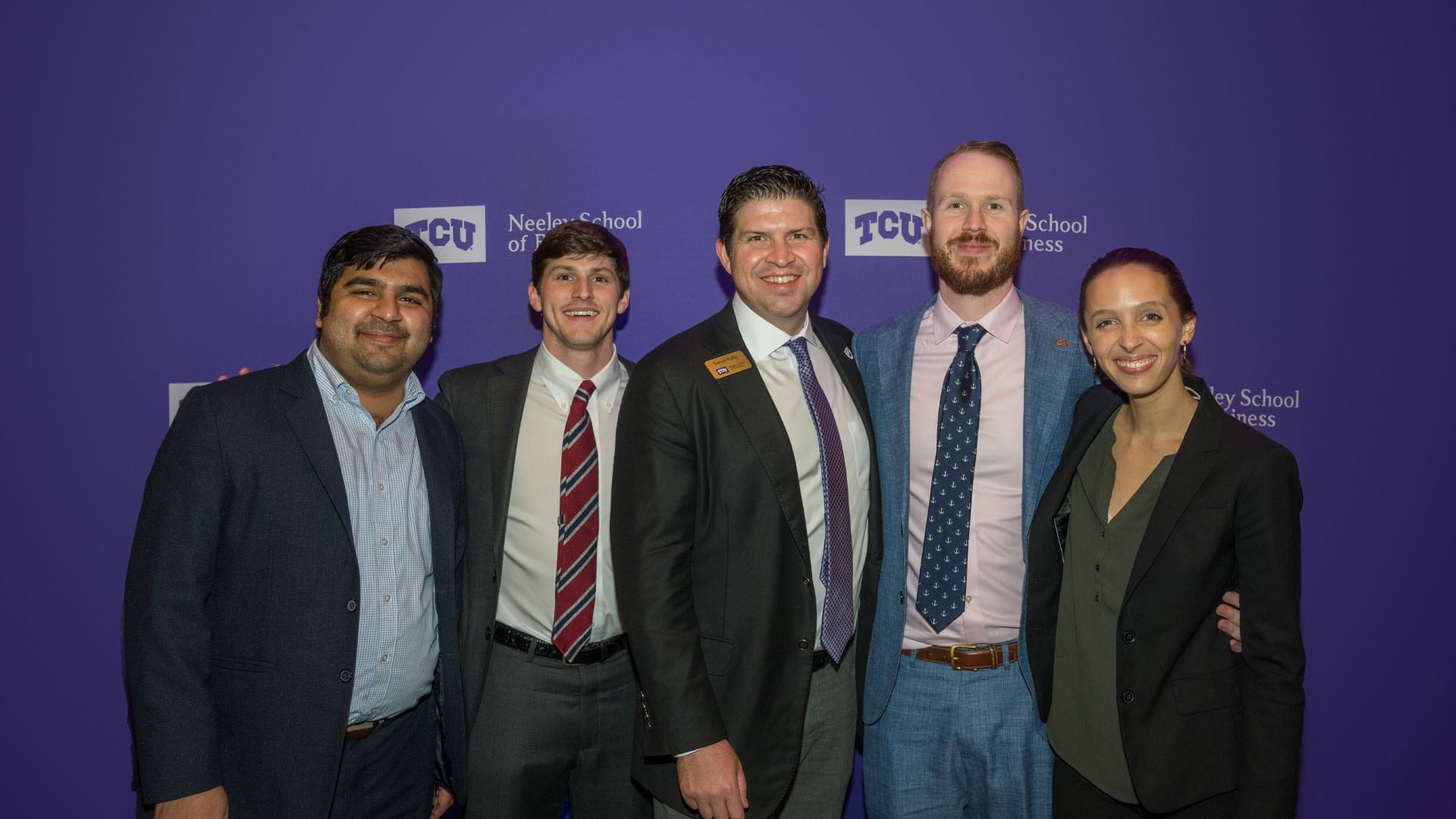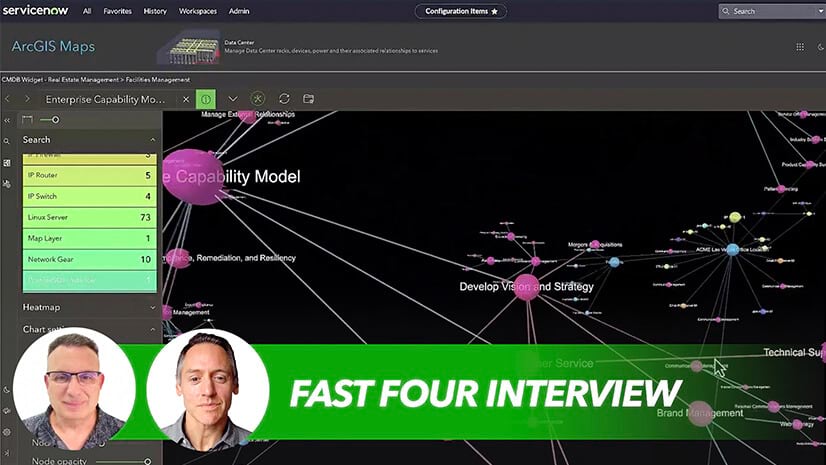This past February, some of the country’s brightest supply chain graduate students convened on the Texas Christian University (TCU) campus in Fort Worth, Texas, for a friendly but intense test of business savvy and location analysis.
The 2020 Graduate Supply Chain Case Competition, presented for the fourth year by the TCU Neeley School of Business and Center for Supply Chain Innovation, challenged 18 teams from top MBA programs to develop the winning solution to a case posed by fast-growing restaurant chain Chick-fil-A.
Given just 24 hours, the graduate student teams had to use location intelligence—the analysis of business data in geographic context—to redesign the restaurant’s distribution network across seven western states, accounting for factors such as consumer demographics, traffic routes, and environmental impact. In addition to location analysis and problem-solving skills, teams needed to communicate effectively with the C-suite as they presented their findings to supply chain executives acting as judges.
In the end, Georgia Tech went home with first prize: $10,000, plus iPads and boasting privileges until next year. In the bigger picture, however, it’s a win for the business community. By underscoring the need for professionals who possess both business acumen and an ability to leverage the analytic power of a geographic information system (GIS), the contest tackles a skills gap acutely felt by Fortune 500 companies.
Corporate sponsors for this year’s competition included Frito-Lay, PepsiCo, and SAP; Nike and Lockheed Martin have sponsored the event and provided cases in previous years. The presence of top corporate representatives attests to executives’ interest in closing this skills gap.
“One of the things I hear most from managers is, ‘Well, we’ve got the technology now, we’ve got the data, but we don’t have the talent,’” says Morgan Swink, director of TCU Neeley’s Center for Supply Chain Innovation. “Someone who understands the business and can apply analytics skills to business problems and interpret the data—that’s the combination of skills that is in greatest demand right now.”
Filling the Talent Pipeline
As supply chains around the world are tested by global disruptions like the COVID-19 pandemic and economic upheaval, the need is greater than ever for professionals who can help companies get full visibility of their supply networks and create agile continuity plans.
In industries ranging from energy to apparel to agriculture, a new breed of analysts has filled that void. Sometimes called spatial business transformers, these analysts employ the insights of location intelligence to frame problems visually through smart maps and dashboards that uncover patterns in data. Using the location analytics of GIS, business analysts can crunch datasets to pinpoint the best areas for business expansion; develop contingency plans to maintain supply chain operations in the face of severe storms or a pandemic; and even monitor sustainability and social equity metrics associated with company and partner operations.
Increasingly, growth-focused companies like Chick-fil-A are actively molding the talent pipeline they need by partnering with programs like the TCU Neeley School of Business. The Atlanta-based restaurant chain has also opened an innovation satellite office on Georgia Tech’s Technology Square to foster collaboration with students; similarly, Nike sponsors projects with MIT students on supply chain innovation.
“It takes a long time to hire the right skill set to do the kind of thing we’re doing—using location data to solve problems around distance, costs, transportation, and service,” says Brandon Stoker, senior principal network lead at Chick-fil-A.
Stoker helped shape the hypothetical competition case at TCU Neeley, basing it on real-life issues Chick-fil-A is working to solve.
“Within supply chain, our biggest problem right now is just the growth of the company,” he says. As Chick-fil-A has added stores, it has increasingly relied on its GIS team to guide a growth strategy. The location analysts apply predictive models to demographic, geographic, and sales data to forecast where demand will likely be highest and risks lowest.
Blending Business Thinking and Location Analysis
The TCU competition’s 18 teams had a similar mandate: recast Chick-fil-A’s distribution network along the West Coast to meet rising customer demand. With storage capacity fixed at each restaurant, teams needed to find a way to spread supply around without locations running out of stock.
The Georgia Tech team created a map-based dashboard to identify the best placement of 11 new distribution centers, performing location analysis on cities such as Kennewick, Washington, and San Luis Obispo, California. They compared how factors such as local wage rates, access to interstate highways, and costs of commercial real estate varied across potential sites.
The students proposed a van service that would supplement routine restaurant deliveries in dense urban areas. They planned to optimize day–time route planning by using GIS to sequence the order and timing of deliveries based on traffic patterns, geographic location, and ideal windows for shipment arrivals. Beyond the economic analysis, the Georgia Tech team also forecast gas emissions from the vans, leading them to suggest the use of electric vehicles.
The upshot of their proposed plan was the recovery of $500,000 in lost sales, plus $150,000 in profit thanks to the new van delivery service. In the end, it proved a winning strategy with the judges.
Daniel Pullin, the John V. Roach Dean of the TCU Neeley School of Business, credits the teams with embracing innovative solutions.
In business, he says, “you have to earn the right to lead every day. In my view, you earn the right to lead and compete through embracing innovation.”

Places like TCU that are really putting effort into creating value for their students—in developing people who not only have the technical capabilities but also understand how to think through business problems in a better way—that’s super valuable for us.
Location Intelligence 101
That description also characterizes the kind of MBA graduates that Chick-fil-A and other companies are looking to recruit: professionals capable of combining location analysis with business strategy from day one, requiring less on-the-job training.
“You can really tell who understands how to [analyze] data, who understands how to explain things, who understands how to work together,” says Stoker of the competition. He says he saw a handful of students from the ranks of competing teams that he’d love to hire.
Also in high demand are analysts who have the same dual capability but in reverse: GIS graduates who honed location analysis skills in school and complemented that prowess with a grasp of business needs. In part because COVID-19 and economic fluctuations have reinforced the need for companies to develop location strategies, the global GIS market is growing fast, projected to hit $25.6 billion by 2030. For Fortune 500 companies, it doesn’t matter which focus came first for new hires—the priority is finding people who can use location insight to help businesses gain an edge.
Acting as a bridge between MBA students, universities, and businesses, competitions like TCU’s serve an important purpose for all participating parties. Companies get a chance to advertise needed skills like GIS fluency, creating a dialogue with universities on how to adapt programs and curricula to private-sector needs. Meanwhile, business school grads get their foot in the door with major brands, making contacts and showcasing skills to top business leaders.
The Neeley School maintains an advisory board of about 16 companies, and stays in regular contact with a wider network of around 30 close corporate partners. Each year, the university surveys business leaders on what skill sets are most desired and what types of technologies graduating students should be acquainted with.
“We’re in the midst of trying to add more of this location intelligence and GIS skill set to our curriculum, and once we do that, I think we’re going to open up a new marketplace,” Swink says.
Students benefit from this educational-commercial dialogue as well. Swink points out that while students tend to specialize in one area—for instance, purchasing, logistics, or planning—they need to understand how those functions work together if they hope to move up in the organization. “The real power of supply chain management is not just in managing these functions excellently, but managing the connections between them,” he says.
A location analysis background can give recent graduates a professional boost, with GIS dashboards making it easier to capture that holistic, big-picture view of a network across all tiers of suppliers.
Graduating Tomorrow’s Business Leaders
The Neeley School prides itself on the ability to adapt curricula to the fast-changing needs of the business world. They recently created a master of science in business analytics degree in a matter of weeks—a task that might require years at less agile schools.
In addition to bringing a location intelligence edge to the supply chain competition, TCU Neeley has emphasized that skill set in other ways. The school recently began participating in the national GIS Day, created a GIS club, and started a mapping competition that involves members of the geology department and TCU’s Energy Institute.
“It’s another creative way that we’re giving those students the opportunity to start leading now using GIS technology,” says Molly Kanthak, assistant director of graduate recruiting and admissions at the Center for Supply Chain Innovation.
As TCU works to graduate the business leaders of tomorrow, supply chain educators like Swink see TCU’s competition as providing an essential advantage—by exposing students to next-level analytic technologies. Business leaders who understand the potential of a platform like GIS, and can apply the location intelligence it generates to strategy and operations, will help advance both their own careers and the success of their companies.
Dean Pullin says that’s especially important now.
“It’s very clear that with all the changes in the world and the pace at which we’re experiencing it, it’s those who can access and analyze and interpret the data to drive better risk-adjusted decisions who are going to end up winning the day.”











